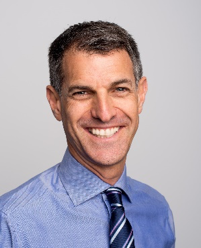PPS Mutual’s Michael Pillemer reflects on what he sees as a change for the worse in the structure of Australia’s life insurance industry over the last twenty years and the consequences he says this is having on the sector, manifested in significant financial losses, higher premium rates and ongoing sustainability challenges…
Over the last two decades, the dominant life insurer model in Australia has been shareholder driven with a focus on short-term market growth. It is my belief that this has resulted in a self-reinforcing cycle of value destruction and consequent poor outcomes for consumers.
This is a bold statement, which I do not make lightly. However, when the retail life insurance industry has been faced with $800 million worth of losses in the 12 months to the end of June 2020[1], we must seriously question the sustainability of the underlying industry dynamics. This problem is even larger when you take into account $600 million in losses for group insurance.
For contextual purposes, it is important to ask the age-old chicken or egg question- did the financial losses create the market share chase, or was it the reverse?
In order to begin to answer this question, we first need to understand what brought on the great market share chase.
The birth of the chase can be pinpointed back to the 1990’s with the demutualisation of Australian life insurers. This demutualisation created a race for market share as vertically integrated or bancassurance models became focused on in-house product sales rather than consumer best interest.
A cycle of value destruction emerged as life insurers, now owned by banks, were faced with return on equity pressure, maximising shareholder dividends and short-term sales targets to meet the next quarterly return. The valuations of wealth management businesses were also heavily based on their ability to ‘cross-sell’ products.
These practices and behaviours simply became normalised across the retail life insurance sector. To summarise: the long-term best interest of insured customers had been supplanted by the short-term interests of shareholders. None of these ‘shareholder value’ problems exist for us as a mutual, as our profits are distributed back to policyholder Members.
The self-reinforcing cycle of value destruction
The cycle of value destruction has at its heart certain core attributes: soft underwriting, special underwriting deals created for special customers of special financial advisers, takeover terms and more recently front-loaded discounts.
This has resulted in negative implications for the industry such as:
- Repeated and significant premium increases
- Higher lapses
- A deteriorating claims experience
- Lower profits
The cycle is evident in the severe financial losses and invariably higher premium rates we have witnessed to date. It is also evident in the concurrent policy lapse rates that the industry is experiencing. The latest NMG stats up to June 2020 show lapse rates for retail life insurers at 15 per cent across the industry[2].
In contrast, lower lapses have a double benefit to insurer profitability. Not only does it allow for more premiums receivable to cover the high new business costs, but it also leads to lower claims as evidenced by the recent claims investigations into income protection experience that showed level premium business (that has low lapses) has 12 per cent to 15 per cent better claims experience than stepped premium business (high lapses). This is caused by the healthy lives lapsing (to move to better or cheaper covers) and so leaving a poorer mix of lives.
The structural issues discussed above have also led to a decline in the quality of insurer risk pools. It takes just a relatively small number of new customers allowed through the ‘gates’ (who otherwise wouldn’t have been insured) to have a dramatic impact on the quality of your risk pool. Once the quality of a pool begins to deteriorate it can rapidly lead to a steep and irreversible decline.
Lack of sustainability
The focus on short-term growth and top-line performance has come at the expense of long-term profitability and sustainability.
This is evidenced in APRA’s Sustainability measures for individual disability income insurance review. APRA said that three of the four main risk product groups available in Australia reported a loss for the March 2020 quarter. Worst among these three products, primarily driven by an adverse claims experience, was Individual Disability Income Insurance or DII.
Income Protection is currently unsustainable as clients either face significant premium increases or insurers continually incur losses that would ultimately lead to a significant reduction in the availability of income protection cover for consumers. Neither of these outcomes seem acceptable or in line with consumer best interest.
APRA focussed in its review on the increasingly generous product terms offered by insurers and a ‘first mover reluctance’ to wind back these terms, despite their unsustainability, for fear of losing business. This is undoubtedly a valid assessment, particularly where product design issues provide a disincentive for the claimant to return to work.
While generous product terms could be another facet of the market share chase, it could also be argued that many product terms now under the microscope are viable so long as they are priced and underwritten properly. This could apply particularly to certain market segments such as the self-employed and professionals. It could be a travesty if APRA takes a sledgehammer to ‘crack open’ the sustainability nut, only to find that the other aspects of the market share chase continue to undermine product sustainability, resulting ultimately in continued poor outcomes for consumers and advisers.
An alternative model
I believe the retail insurance industry needs an antithesis of the incumbent insurer model. The industry needs to focus on competitive and sustainable product design, prudent underwriting and prioritise a longer-term focus. There has never been a more important time to reassess past dynamics of the sector, and work towards building a strong and sustainable insurance industry for all Australians.
Let’s end the market share chase and instead focus our efforts on a true alignment of interests and incentives with the actual life insured.
1 APRA Quarterly Life Insurance Performance Statistics
2 “NMG – Retail Advice Channel Risk Distribution Monitor Q2 2020”

Michael Pillemer is the chief executive of mutual insurance company PPS Mutual.








so… what your saying is the banks have ruined another industry that was sustainable and viable? no way! Ha!
very good article, these points I have made to MP’s fall on deaf ears… think the talent pool within Federal parliament is unhealthy as well.
Oh, this is interesting. I thought that all of the problems in the industry were caused by those greedy advisers.
Very good article Michael. Spot on. The lack of sustainability and other problems plaguing insurance in Australia stem from the the destruction of the mutual model. The unsuspecting public are now going to be encouraged down a path of ‘junk’ insurance, thanks to new ‘sustainable’ products offered as an alternative to their existing unaffordable contracts. Dwindling numbers of risk advisers and very few recruits to replace them is not helping either. If the realization that this has been a disaster ever dawns on the regulators & government, I fear it will be much too late. But we can only try, again excellent article, many thanks for your considered contribution to this argument.
Michael’s comments are accurate, though a leading cause of the decline in profitability, was a transfer of responsibility from the Life Companies, who were the main protagonists and who aided and abetted the premise of churn, via the ASIC 413 report that was proven to be false, then allowed Advisers to be blamed and caught up in their game of higher profit at all cost, via their mouthpiece the FSC.
The Life Companies were warned that if they persisted with their actions and worse, “inaction” around the direction they wanted the Government and the Regulators to take, then Advisers would refuse to play their game.
As usual, no-one listened and now, “shock, horror, surprise” the train wreck that the Life Insurers and all Australians face today, has arrived and all the flashing warning signs that easily could have prevented what will be a terminal decline, were ignored.
It is not just Life Insurer greed that is killing the Advise Life Insurance Industry. It is the growing army of ASIC Regulators, Education Guru’s, Public servants, left wing whack jobs who know nothing of how Life Insurance advice works and Government Intervention that is now driving the Industry over the edge.
The Life Companies created a monster they cannot control and are too fearful to try and stop it.
Instead they are staring at the oncoming head lights of a truck hell bent on arriving at a Utopian destination that only exists in these vested interests, tiny Institutionalised minds.
Now let us once again explain how this train wreck can be fixed. Changes must be made to the LIF and FASEA fiasco
left wing whack jobs who know nothing of how Life Insurance advice works
When you say dumb things you lose serious amounts of credibility. Just like how you blame every other stakeholder except for advisers who can do no wrong.
It is difficult to lose Cred by telling the truth?
Well said Jeremy…and I’m sure you have been predicting these current circumstances and the demise of the Risk Advice industry for years. I also find it very interesting how the term “Churn” has never been defined. The way I see it is the FSC have orchestrated the whole thing but never ever saw these consequences coming. All they saw was more profits for members and more bonuses for executives. We now have a situation where stripped down products are going return the industry to where it was 40+ years ago and where consumers learned and developed the mindset about insurers not paying claims. How on earth are you ever going to be satisfied that the client fully understands the product and the recommendations being provided ahla FASEA. Before 1 April 2020, we could be confident of saying to a client that the IP policy being recommended would respond if you couldn’t work due to illness or injury. Now we will all be sounding like lawyers by having to say “well, whether this policy responds depends on” blah blah blah. The loop holes and the restrictions that have started being introduced will do nothing for our industry’s credibility.
You’ve raised some good points Michael and I agree to the ending of market share chase and focus on the client and their best interests. However, issues such as LIF in its current format, the FASEA impositions, and the overwhelming compliance burden on advisers, need to be addressed as a priority. Advisers can only act in their clients’ best interests, if they can actually stay in business.
A good attempt to describe what is happening and quite accurate on the history, except he forgot the damage that the LIF changes caused.
The massive increase in claims which seems to be a portent to worse population health and reduce life expectancy (as smoking cessation isn’t adding to life expectancy any more) seems to be bigger than all the other issues. You can recover from chasing market share and higher lapse rates but you can’t recover if your costs of business (claims) go through the roof and you shoot your financial advisers in the back.
Good article.
Since late in 2013 the regulators, likely under pressure from agenda-driven factions, have brought the life insurance industry to its knees.
The so-called reforms since then have only made matters worse, to the point where operating a specialist life-risk business is no longer sustainable. FASEA will ramp that up several more notches without any measurable benefits and frankly I don’t see that it can be reversed.
In real terms, LIF, coupled with FASEA, will mean the death-knell for an industry which worked perfectly well for 150 years+ and provided Australians with security, a clear path and comparatively few complaints by comparison with the abysmal, appalling mess we’re now in.
The above two adjectives don’t even come close to really telling the story about how things are now!
Comments are closed.